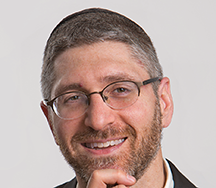Finally, it was much more than just a bronze tan that US healthcare agency executives brought back from Cannes.
This year the US made a much better showing at the Lions Health festival than last, taking home nine awards (one Grand Prix, two golds, one silver, and five bronzes), vs. just four last year. But those who saw DigitasLBi and AstraZeneca win a Grand Prix also saw the Cannes jurors ignite a big question.
Can a branded campaign win the top prize for creativity at Cannes or is “life-changing creative” (the Health Lions tagline) inexorably tied to non-branded, disease-awareness campaigns? The other big question I believe will preoccupy the industry this summer: whether US pharma, and by extension its healthcare agencies, is creative enough to accomplish the feat.
Because the Digitas/AZ effort “Take It from a Fish” was not product related, even though AZ markets Epanova to treat elevated trigs, these questions are now swirling like a midsummer tempest outside the Palais des Festivals. All manner of experts will be putting forth their reasoned arguments.
In fact this 230-page volume gives us a pretty good bead on where the Top 100 North American healthcare agencies’ capabilities are these days, and how prepared they are to raise their creative game in the future. These agencies are, by and large, brand-promotion firms doing, well, a great deal of branded work.
First click here, where we present the results of our Agency survey A to Z. We asked firms, as we do every year, what are their biggest challenges. Of the 305 hurdles reported, not one involved “enhancing creativity,” “provocatively engaging a customer” or “inspiring clients to aim higher.”
Your first impression might be that the North American healthcare agencies are blasé when it comes to creative. Wait, let’s look at what respondents thought would be the biggest trends in the coming year. Here we see 55% of trends referred to “creating memorable content and experiences,” out of 95 responses received.
Now we know it’s on their radar, but what about making that leap from pro bono work to branded messaging? The answer is, the industry seems pretty far along already. Five of the nine awards given to US agencies this year were for branded campaigns, including Galderma’s Soolantra (see the profile of McCann Echo here to glimpse the winning effort).
Healthcare agencies’ use of media is also set to become smarter. With media-buying accounts among several of the big pharma advertisers in flux, agencies here and abroad are being asked to play a more prominent role on the media side (click here for more executive-level insights).
My final point: See our four-page gatefold revenue chart, located here, which ranks the Top 100 North American healthcare agencies by 2014 US revenue. What does this have to do with industry’s ability to win another Grand Prix? Zip. But calculating revenues for the entire sector required the implicit—if not explicit—cooperation of the covered companies. At the least, the exercise raises transparency. At most, it serves to cast off one of the vestiges of an industry shackled by regulations, in this case Sarbanes-Oxley.
So, would it be reductionist to suggest that the US healthcare industry is not only concerned about, but also well on its way to, equaling its rest-of-world counterparts in front of the Cannes jurors by proving that regulations are no longer viewed as a hindrance to creativity? May this be the next vestige to go.
From the July 01, 2015 Issue of MM+M - Medical Marketing and Media








